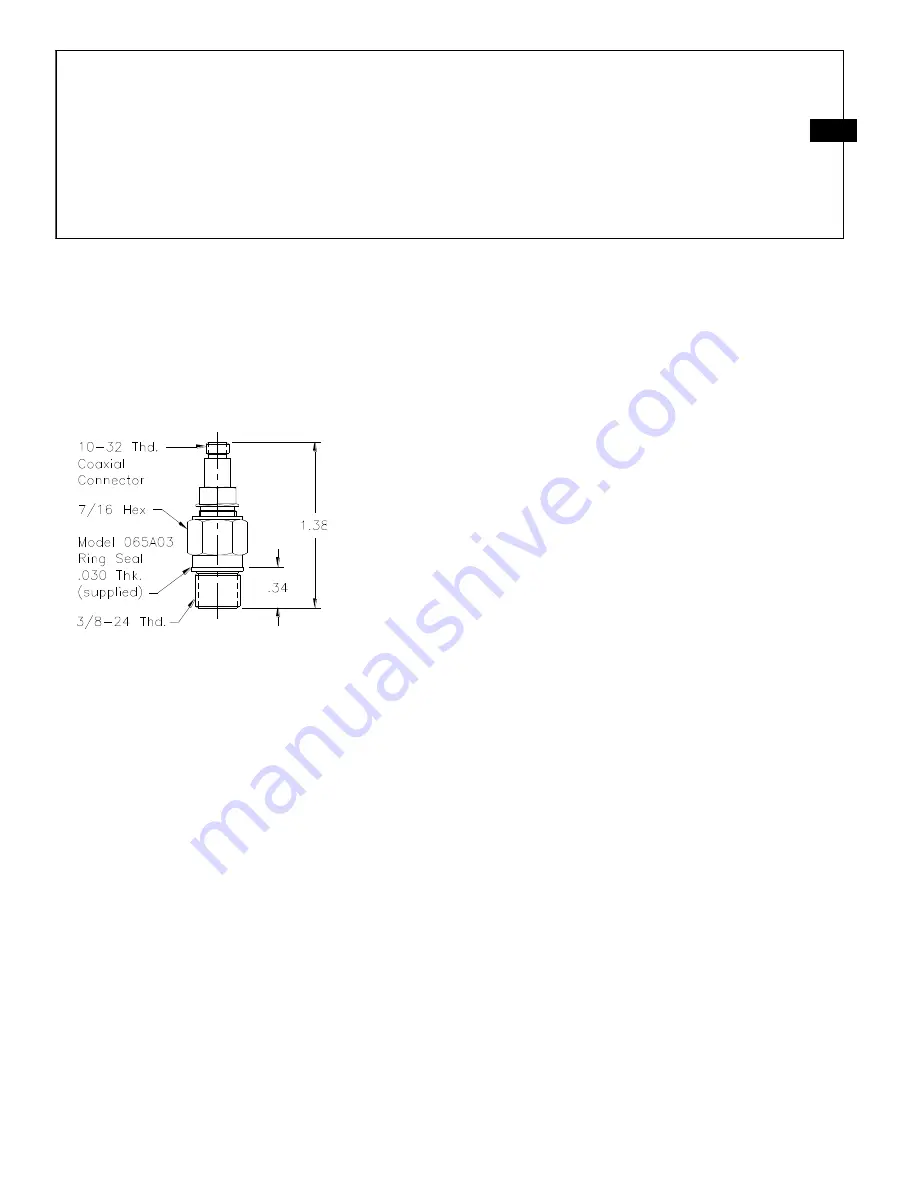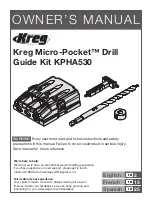
Drawing Number: 21075
Revision: C
ECN Number: 47023
OPERATION MANUAL FOR
QUARTZ PRESSURE SENSORS
SERIES 102
SERIES 113
2
threaded adaptor with floating clamp nut to allow
adjustment of diaphragm mounting depth where it is
necessary to adapt to various wall thicknesses. These
models are supplied only as low-pressure (250 psi
and 100 psi) sensors and are also "off ground".
Models 102A21 and 102A22 are high-temperature
ICP
®
versions to 400
F (204
C), with a 3/8-24
straight threads adaptor and 1/8-27 NPT adaptor,
respectively.
Series 102: Thread Mount Design, Ground-
Isolated Sensor
3.0 INSTALLATION
This manual contains outline and installation
information for your specific model.
Prepare
mounting
ports
in accordance with
instructions given in specific installation drawings,
paying particular attention to sealing surfaces. These
surfaces must be smooth and free from chatter marks,
nicks and other irregularities which could preclude a
pressure tight seal.
To fully realize the high-frequency response
capabilities of this sensor series, flush mounting of
the diaphragm must be used.
In some cases, where flash temperatures such as those
generated by blasts and shock fronts are present, it
may be necessary to thermally insulate the diaphragm
to minimize signals generated by these effects.
Common black vinyl electrical tape has been found to
be an effective insulating material in many cases.
One or more layers may be used across the end of
diaphragm and adaptor.
A silicone rubber coating approximately .010” thick
has also been proven effective in many applications.
General Electric RTV type 106 is recommended.
Apply the rubber coating to the surface of the
diaphragm and allow it to cure in accordance with the
manufacturer’s instructions. (If you have ordered the
CA option,
ablative coated models, further protection
will not be necessary.)
Although ICP
®
sensors have low-output impedance
and in general are not affected by moisture, in
extreme environments it is good practice to protect
cable connections with shrink tubing.
It is not necessary to use low-noise cable with this
sensor series. In fact, an optional Model 070B09
Solder Connector Adaptor allows the use of ordinary
two-wire cable if desired.
4.0
OPERATION
It is only necessary to supply the sensor with a 2 to 20
mA constant current at +20 to +30 VDC through a
current-regulating diode or equivalent circuit. (See
guide G-0001B for powering and signal utilization
information pertaining to all ICP
®
instrumentation).
Most of the signal conditioners manufactured by PCB
have an adjustable current feature allowing a choice
of input currents from 2 to 20 mA. In general, for
lowest noise (best resolution), choose the lower
current ranges. For driving long cables (to several
thousand feet), use higher current, up to 20 mA
maximum.
To operate system using a PCB signal conditioner:
1.
Switch power on.
2.
Wait several minutes for the IC ampli-
fier to turn on and stabilize.
3.
Proceed with measurements.




























